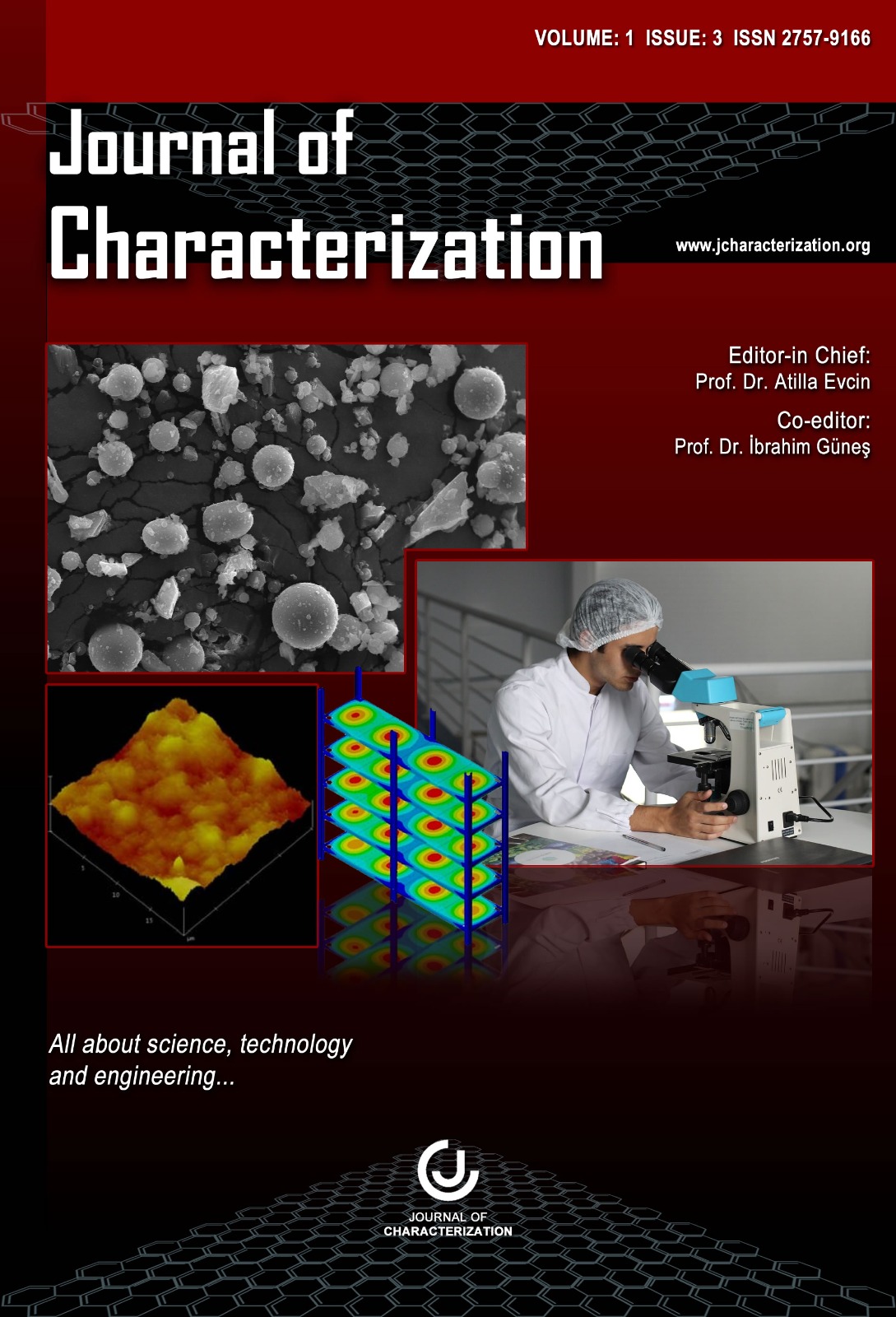Karbon Fiber ve Elvaloy ile Takviyelendirilmiş Polipropilen/Poli(laktik asit) Karışımlarının Temas Açısı ve Islanabilirlik Özelliklerinin Araştırılması
Author :
Abstract
Bu çalışmanın amacı, polipropilen (PP)/poli(laktik asit) (PLA) karışımlarının temas açısı ve yüzey enerjisi özellikleri üzerine karbon fiber ve etilen-bütil akrilat ilavesinin etkilerinin incelenmesidir. PP’ye PLA ilave edildiğinde mekanik özelliklerde iyileşmeler beklemek mümkündür ve farklı uygulamalar için potansiyel kullanım alanı oluşmaktadır. Benzer sıcaklıklarda işlenmeleri ergiyik harmanlama ile üretimlerini de mümkün kılmaktadır. PP nonpolar, PLA ise polar yapıya sahip olduğundan üretimde uyumlaştırıcı kullanımı karışımın özelliklerini iyileştirmek için tercih edilmektedir. Karbon fiber ilavesi ile mekanik özelliklerde artış beklemek de doğaldır. Kompozitler ergiyik harmanlama yöntemi ile çift vidalı bir ekstrüder kullanılarak üretilmiştir. PP/PLA karışımları ağırlıkça %75-25 ve %25-75 olacak şekilde ayarlanmıştır. Karbon fiber ağırlıkça %5-10-20 ve 30 oranlarında karışımlara katılmıştır. Elvaloy ise uyumlaştırıcı olarak tüm bileşimler için 5 phr oranında kompozitlere ilave edilmiştir. Çalışmayla uyumlaştırıcı ve karbon fiber kullanımının PP/PLA karışımlarının yüzey enerjileri ve ıslanma özellikleri üzerine etkilerinin araştırılması amaçlanmaktadır.
Keywords
Abstract
The aim of this study is to examine the effects of carbon fiber and ethylene-butyl acrylate addition on the contact angle and surface energy properties of polypropylene (PP)/poly(lactic acid) (PLA) blends. When PLA is added to PP, it is possible to expect improvements in mechanical properties and potential uses for different applications. Processing at similar temperatures also enables their production by melt blending. Since PP has a nonpolar structure and PLA has a polar structure, the use of compatibilizers in production is preferred to improve the properties of the blends. It is also natural to expect an increase in mechanical properties with the addition of carbon fiber. Composites were produced by melt blending method using a twin-screw extruder. PP/PLA blends were adjusted to be 75-25% and 25-75% by weight. Carbon fiber was added to the blends at 5-10-20 and 30% by weight. Elvaloy was added to the composites as a compatibilizer at a concentration of 5 phr for all compositions. The aim of this study is to investigate the effects of compatibilizer and carbon fiber use on the surface energies and wettability properties of PP/PLA blends.
Keywords
- [1] K. J. Kubiak, M. C. T. Wilson, T. G. Mathia and Ph. Carval, “Wettability versus roughness of engineering surfaces”, Wear, 271, pp. 523-528, 2011.
- [2] Y. C. Jung and B. Bhushan, “Contact angle, adhesion and friction properties of micro- and nanopatterned polymers for superhydrophobicity”, Nanotechnology, 17, pp. 49704980, 2006.
- [3] H. Kang, X. Lu and Y. Xu, “Properties of immiscible and ethylene-butyl acrylate- glycidyl methacrylate terpolymer compatibilized poly (lactic acid) and polypropylene blends”, Polym. Test., 43, pp. 173-181, 2015.
- [4] H. S. Lee and J. D. Kim, “Effect of a hybrid compatibilizer on the mechanical properties and interfacial tension of a ternary blend with polypropylene, poly(lactic acid), and a toughening modifier”, Polym. Composite, 33(7), pp. 1154-1161, 2012.
- [5] S. A. Arvidson, K. C. Wong, R. E. Gorga and S. A. Khan, “Structure, molecular orientation, and resultant mechanical properties in core/sheath poly(lactic acid)/polypropylene composites”, Polymer, 53, pp. 791-800, 2012.
- [6] S. Pivsa-Art, J. Kord-Sa-Ard, W. Pivsa-Art, R. Wongpajan, N. O-Charoen, S. Pavasupree and H. Hamada, “Effect of compatibilizer on PLA/PP blend for injection molding”, Energy Procedia, 89, pp. 353-360, 2016.
- [7] A. K. Abay, M. B. Gebeyehu, H. K. Lin, P. C. Lin, J-Y. Lee, C-M. Wu, R-I. Murakami, and T-C. Chiang, “Preparation and characterization of poly(lactic acid)/recycled polypropylene blends with and without the coupling agent, n-(6aminohexyl)aminomethyltriethoxy-silane”, J. Polym. Res., 23(198), pp. 1-12, 2016.
- [8] Z. Bai and Q. Dou, “Rheology, morphology, crystallization behaviors, mechanical and thermal properties of poly(lactic acid)/polypropylene/maleic anhydride-grafted polypropylene blends”, J. Polym. Environ., 26, pp. 959-969, 2018.
- [9] H. Ebadi-Dehaghani, M. Barikani, H. A. Khonakdar, S. H. Jafari, U. Wagenknecht and G. Heinrich, “On O2 gas permeability of PP/PLA/clay nanocomposites: A molecular dynamic simulation approach”, Polym. Test., 45, pp. 139-151, 2015.
- [10] T-W. Lee and YG. Jeong, “Enhanced electrical conductivity, mechanical modulus, and thermal stability of immiscible polylactide/polypropylene blends by the selective localization of multi-walled carbon nanotubes”, Compos. Sci. Technol., 103, pp. 78-84, 2014.
- [11] H. Ebadi-Dehaghani, HA. Khonakdar, M. Barikani, SH. Jafari, U. Wagenknecht and G. Heinrich, “An investigation on compatibilization threshold in the interface of polypropylene/polylactic acid blends using rheological studies”, J. Vinyl. Addit. Techn., 22(1), pp. 19-28, 2016.
- [12] Q-W. Lu and CW. Macosko, “Comparing the compatibility of various functionalized polypropylenes with thermoplastic polyurethane (TPU)”, Polymer, 45, pp. 1981-1991, 2004.
- [13] S. Wacharawichanant, P. Hoysang and S. Ratchawong, “Mechanical, thermal and morphological properties of poly(lactic acid)/ethylene-butyl acrylate copolymer nanocomposites”, Iop Conf. Ser. Mater. Sci. Eng., 223, pp. 1-10, 2017.
- [14] DJ. Daniel and K. Panneerselvam, “Abrasive wear of polypropylene/Cloisite 30B/Elvaloy AC 3427 nanocomposites”, J. Compos. Mater., 0(0), pp. 1-11, 2017.
- [15] DJ. Daniel and K. Panneerselvam, “Mechanical and thermal behaviour of polypropylene/Cloisite 30B/Elvaloy AC 3427 nanocomposites processed by melt intercalation method”, Trans. Indian Inst. Met., 70(4), pp. 1131-1138, 2017.
- [17] F. M. Fowkes, “Calculation of work of adhesion by pair potential suummation”, J. Colloid Interface Sci., 28, pp. 493-505, 1968.
- [18] Z. Yao, J. Y. Y. Heng, S. Lanceros-Méndez, A. Pegoretti, X. Ji, E. Hadjittofis, M. Xia, W. Wu and J. Tang, “Study on the surface properties of colored talc filler (CTF) and mechanical performance of CTF/acrylonitrile-butadiene-styrene composite”, J. Alloy Compd., 676, pp. 513-520, 2016.
- [19] W. A. Zisman, “Relation of equilibrium contact angle to liquid and solid constitution”, Advances in Chemistry, 43, pp. 1-51, 1964.
- [20] S. C. Roh, E. Y. Choi, Y. S. Choi and C. K. Kim, “Characterization of the surface energies of functionalized multi-walled carbon nanotubes and their interfacial adhesion energies with various polymers”, Polymer, 55, pp. 1527-1536, 2014.
- [21] S. Lee, K. Ko, J. Youk, D. Lim and W. Jeong, “Preparation and properties of carbon fiber/carbon nanotube wet-laid composite”, Polymers, 11, 1597, pp. 1-11, 2019.





